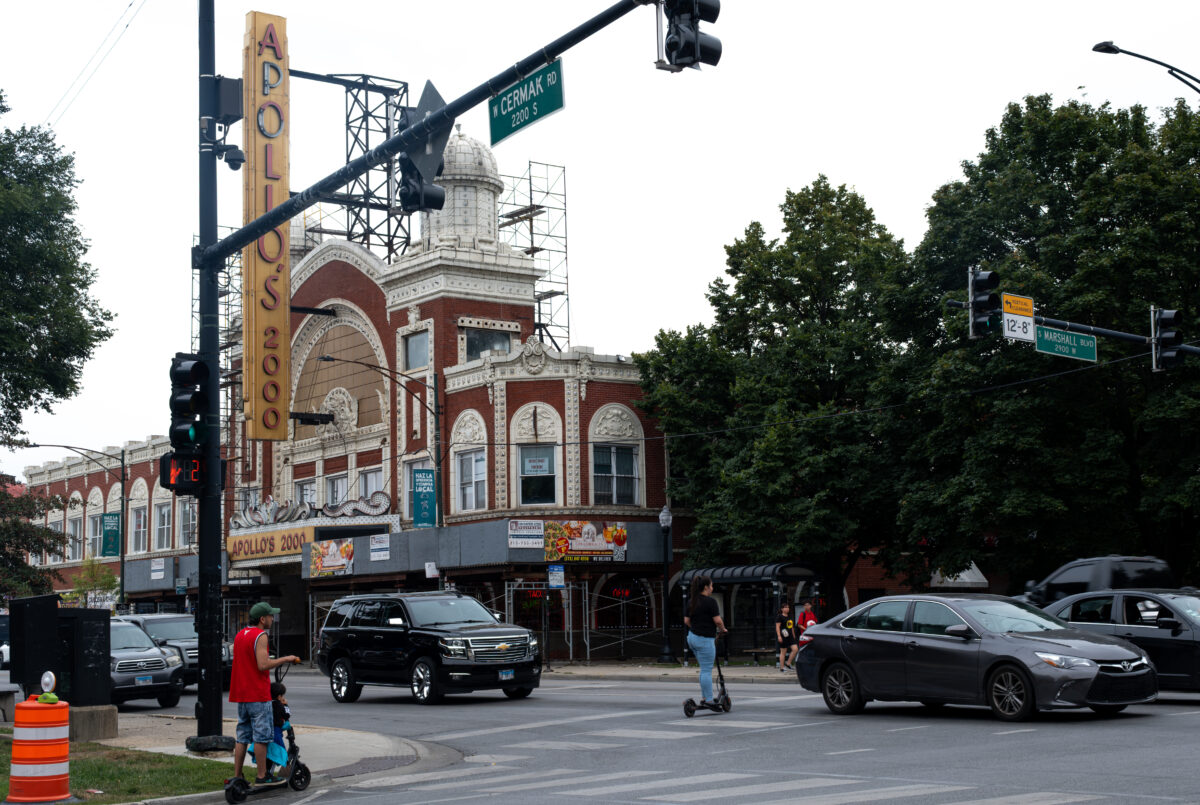Ask most Chicagoans about Little Village and they might know it as the “Mexican capital of the Midwest” or for the welcoming arch on 26th street and Albany. They will definitely know about the amazing food and perhaps know that 26th Street is a major economic engine not just for the community but for the city. But few will know about Marshall Square, the neighborhood that lies within Little Village’s eastern edge.
Marshall Square is a culture-rich area named for the historic green boulevards that frame it. It is bounded by rail lines and grand parkways—Marshall Boulevard and 24th Boulevard—with Cermak Road and California Avenue anchoring the “square” that gave the area its name. It’s Little Village’s quieter front porch: tree-lined, deeply local, and hiding some of the city’s most compelling food and arts spaces.
Marshall Square’s layers show up in its cultural institutions as well. On Cermak Rd., the sleek neon of Apollo’s 2000 sign hints at its past life as the Marshall Square Theater (opened in 1917). Latinos Progresando’s community center, which provides space for residents to receive mental health and legal services, and where small business owners can also receive support, was once the Marshall Square library, shuttered in 2009 but brought back to life in 2022.
A few blocks away, creativity spills out of a modest brick building at OPEN Center for the Arts, where I am also an advisory board member. Founded in 2014, OPEN is the only art gallery in the community, which provides space, guidance, and a platform for emerging and established artists—knitting the neighborhood’s cultural energy into exhibitions, workshops, and community projects.
Marshall Blvd. and Cermak are the arteries of the neighborhood. The boulevard is part of Chicago’s famed park and boulevard system, and Cermak Ave is the lesser known commercial corridor that sits in the shadow of 26th street. Between the two, they create a balance of commerce and community.
What sets Marshall Square apart isn’t just heritage; it’s how public life still happens at street level. The boulevards function as recreational public space while the sidewalks offer serendipity. A paletero bell can always be heard during the summer while neighbors sell goods from their front porch and vendors sell elotes, tamales or champurrado. Institutions are intensely local—small businesses remain more family-run than franchise owned. The result is an organic ecosystem where art shows double as resource fairs, and restaurant owners contribute to community events . It’s a neighborhood built for residents first, and that’s exactly what makes it magnetic to visitors who value culture, food and art.
Marshall Square isn’t trying to be a “destination” and perhaps that is why you may have never heard of this neighborhood. There is nothing flashy about it. The residents are humble and hard working but know what they need and want to enjoy their neighborhood.
Its vibrancy comes from care—families running restaurants for decades, artists opening their doors to the block, neighbors tending the shared “front yard” of the boulevard. In a city that always chases the next big thing, Marshall Square keeps its cool by keeping true to the roots of its residents. If you visit Marshall Square, respect the pace. Support local. And remember that the boulevard belongs to everyone—so linger, listen, and let Marshall Square teach you how a neighborhood can be both hidden and completely alive.

